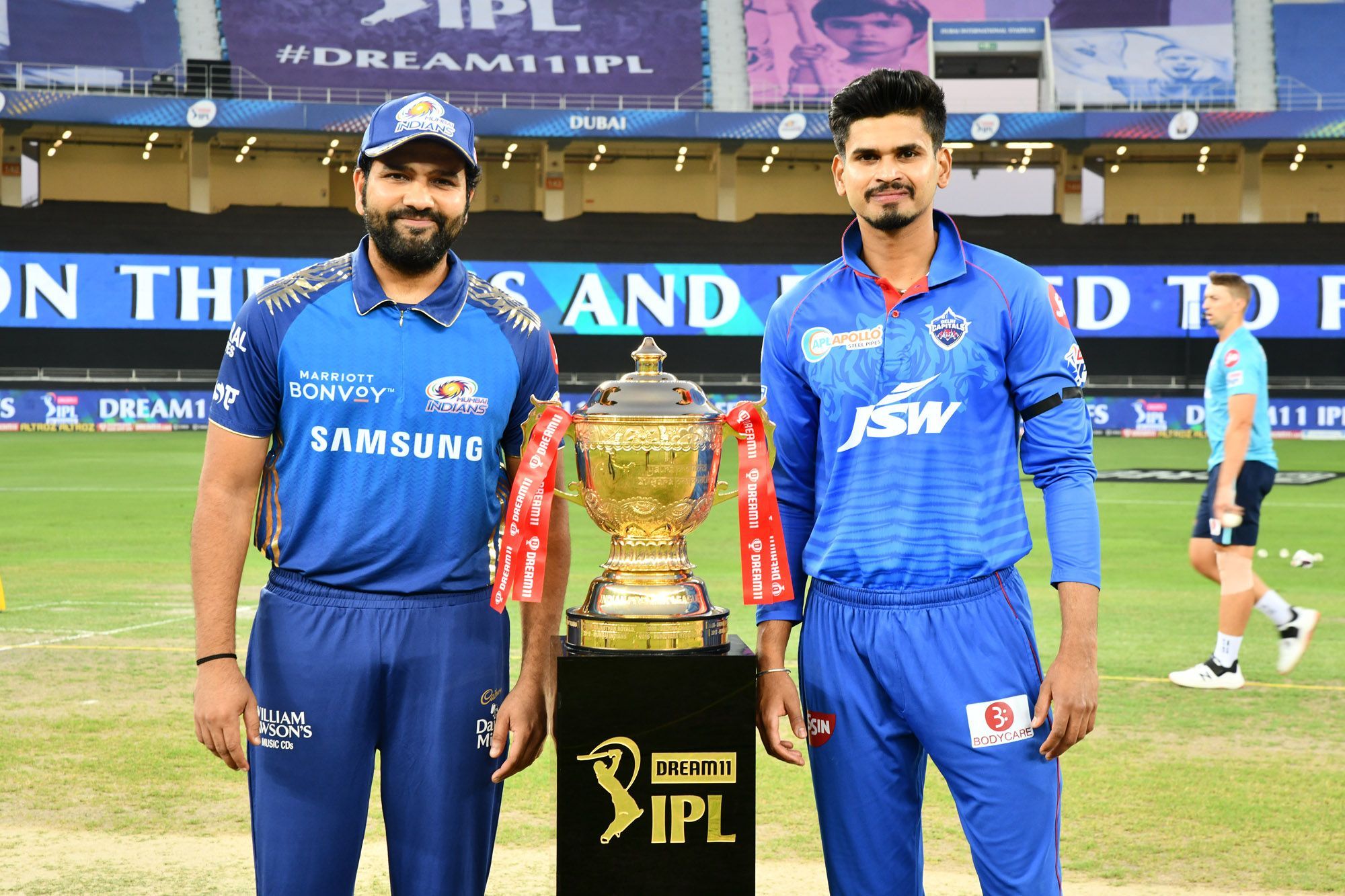The Final Gameplan | What Delhi Capitals should do to clinch their maiden IPL trophy
Delhi are just one step away from capturing the glorious IPL trophy, something that has evaded them since the inception of the tournament in 2008. They know that they are going up against one of the ‘unbeatable’ sides in this year’s competition, but are MI really unbeatable?

Where are DC and MI playing on Tuesday?
At the Dubai Cricket Stadium in Dubai
What’s the record of both sides at the venue this season?
MI - P4 W2 L2
DC - P8 W4 L4
Incidentally, Delhi have played two games at the venue against Mumbai, with both of the games going horribly wrong for the franchise. In their first take, they could not fathom up a proper batting order, in a nine-wicket loss, and in the other, they horribly failed to get their batting up and going against Mumbai yet again. In all, they will go as the weaker side in the final.
What’s the H2H record of the two sides this season?
First meeting: MI beat DC by 5 wickets in Abu Dhabi
Second meeting: MI beat DC by 9 wickets in Dubai
Third meeting: MI beat DC by 57 runs in Dubai
Rohit Sharma’s Mumbai Indians would go into this contest knowing that they clearly have Delhi’s number this season.
Delhi Capitals - The Gameplan
Form is key but it isn’t quite the only metric to state that Mumbai Indians would walk off to a dominating win against Delhi Capitals in the IPL final. Since the group stage, Delhi now have a record of 1-1 in the playoffs, where the results have been 50-50. Against Mumbai earlier in the first qualifier, the Iyer-led franchise had a golden opportunity to restrict them to a total under 180, which was in all means chaseable. H2H record doesn’t favour them as well but they wouldn’t be under more pressure than Mumbai going into the final.
Problem Child 1: Solving their middle-overs crisis where runs get dried up
What can they do to solve it?
Simple, from the outside world, the solution for this problem clearly lies on Twitter, where every other cricket expert has pointed out how Shimron Hetmyer needs to play at No.3 to potentially optimise the run-scoring in the segment where they have struggled. Skipper Shreyas Iyer and Rishabh Pant have both struggled massively in the middle-overs, which means that Hetmyer should be promoted to No.3, just after Stoinis-Dhawan at the top of the batting order.
Why?
Delhi’s batting unit has been one of the biggest concerns for them this season, with an average of 25.50 runs in 16 games, all coming at strike-rate of 131.04. In stark contrast, Mumbai has a strike-rate of 146.93 and an average of 36.07, which shows why they are miles superior.
One of the major culprits for Delhi’s strong start withering away is Shreyas Iyer, who is a hazy starter, scoring at 95.5 in his first ten balls. From overs 6-10 this season, Iyer averages 32 runs but at a strike-rate of 112.3, which makes it tough for Delhi to finish off the game or set up a good target. Another point of worry for Iyer in the middle is facing the likes of Rahul Chahar and Krunal Pandya, two sets of bowlers against whom he has struggled. Against left-arm orthodox and leg-spinners, Iyer has scored 38 runs in 37 deliveries, getting out four times.
Meanwhile, the solution lies elsewhere - in the form of Shimron Hetmyer, who has excelled batting at No.3 for Guyana Amazon Warriors. From the end of the powerplay till the tenth over, Hetmyer has scored 79 runs in 60 deliveries, at a strike-rate of 131.7, which increases by six in the next five overs, where he has scored 84 runs off 61 deliveries in the CPL. Against left-arm orthodox bowlers, he has scored 33 runs off 22 deliveries while against leg-spinners, he has scored 109 runs in 90 deliveries, getting out seven times from the start of last year, all at a strike-rate of well over 130 combined.
What happens to Pant and Iyer?
For Shreyas Iyer, he should bat at No.4, in case Shimron Hetmyer falls early, which would allow the likes of Pant to thrive. At 4, he has scored 530 runs in the past, at an average of 27.9 and a strike-rate of 125, which would be beneficial for the franchise.
Without an off-spinner in Mumbai’s outfit, giving Rishabh Pant the role of a finisher at No.5 would highly benefit the Delhi Capitals side, with the southpaw’s staggering strike-rate and average against the type of bowlers. Against left-arm seamers and right-arm seamers, he has scored at a combined strike-rate of nearly 155, while it reduces to 153.5 against Mumbai. In the death, he has scored 78 runs in 28 deliveries, at a strike-rate of 278.6, which would help the team.
Problem Child 2: Sending back Mumbai’s backbone - Suryakumar Yadav
Suryakumar Yadav is Mumbai’s backbone, seriously. The way he has bailed the team out of trouble this season is one of the best across the board. Last game too against DC, when the team was struggling, the right-hander scored a fifty, which means DC knows that he is a key wicket and a backbone. So what do they do?
What do they do?
Send SKY back to the pavilion early.
How: Anrich Nortje
Why will that work - Well, you are combing Delhi’s strength and Suryakumar Yadav’s weakness in the same line, his 'vulnerability' against right-arm pace is well documented, with him averaging just 25 and a strike-rate of 144, but when you compare it with the other bowling types, it is the least you would get. Two times this season, Nortje and Rabada have got his wickets for Delhi but after he has got them to a good start - 53 and 51.
This season, the right-hander has been dismissed thrice in the powerplay overs, a phase that Delhi must target, for that they should account for Rohit early on with Ashwin before bringing Nortje against Suryakumar, a phase that the right-hander has struggled this season. Once you let him go, you would have to pay the penalty in the overs leading to the tenth, and in the next five would have done all the damage, more than you imagine.
So for Delhi, they would want to get him on strike early on in the innings and risk that extra over in case from Nortje to capture his wicket, with Rabada clearly effective in the death overs.
Problem Child 3: Restricting Mumbai batsmen in the death overs
Well, this is a major issue, a force that Delhi bore the brunt in their first qualifier, a phase where Mumbai Indians swept away with the game, all because of how deep they bat through in the innings and a plethora of options that they possess - Ishan Kishan, Kieron Pollard, Pandya brothers.
Where’s the respite: In the death overs, Mumbai have scored 745 runs, out of just 364 deliveries, at a strike-rate of 204.67 and an average of 37.25, with 89 runs being their highest in the last five. Now that’s huge, everyone knows that, so what do you do apart from pray?
Dubai is one venue where surprisingly there is more offer to the spinners and with Delhi having two able spinners, they might go with the same strategy. They must eliminate two of the four threats before the start of the death overs. One solution to two troubles (Kishan and Pollard) - Ravichandran Ashwin. That’s where Delhi need to tread in carefully, Kishan just strikes at 96 against off-spinners having been dismissed once, and with Pollard, he got out to Ashwin in the last game. Historically, Pollard has got out 4 times to Ashwin, scoring just 71 runs off 43 balls, a risk that they would need to take.
Another option that is a two-in-one for Delhi would be Kagiso Rabada, who is an ace in the death overs, and clearly is a weakness for both Hardik Pandya and Pollard. For Rabada too, he has picked up 48 wickets at the death, averaging 14.4 with the ball, suggesting that this is the only route. With the remaining Krunal Pandya, Delhi should be aiming to bring back Nortje and bounce him out, a dismissal that is quite common with the left-hander.
Other important pointers
a) With Delhi opening with Marcus Stoinis, Mumbai should be looking to counter the decision by bringing in the left-arm Krunal Pandya early into the attack, knowing that there is a wicket on offer. Against left-arm spinners, Stoinis averages 28.5 while having a strike-rate of 99.4 and six dismissals alongside. However, with Dhawan at the other end, there is a need for Mumbai to open with Krunal Pandya and Trent Boult, with Pandya having a better chance against Stoinis early on.
b) Use of Jasprit Bumrah would be quite a question for Rohit Sharma but he has already excelled in the question and knows the right formula. With Rahul Chahar in the team, there is no need for Mumbai to utilise their pacer in the overs from 6-10 but from 11-15, Mumbai would definitely bring back the right-arm pacer for a second spell, where Delhi have struggled the most this season, where he has picked up six wickets, at an economy rate of 5.79 and an average of 13.5
c) Rohit Sharma’s weakness is well documented, everyone clearly knows where it is easy to tackle him. The statistics will suggest how big an issue Rohit is to the free-flowing Mumbai batting order. The right-hander averages nearly 51.7% of dot balls while having a strike-rate of 126.3. With Ashwin opening the bowling against de Kock, expect him to surprise Rohit again, thanks to the right-hander’s pathetic record against off-spinners this season - getting out twice, with a strike-rate of just 100.

Comments
Sign up or log in to your account to leave comments and reactions
0 Comments